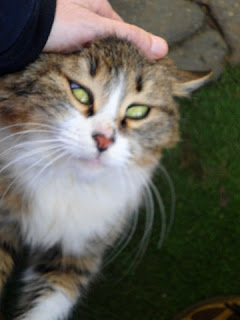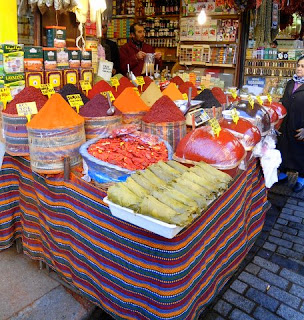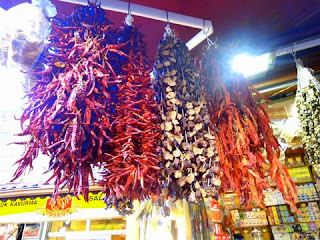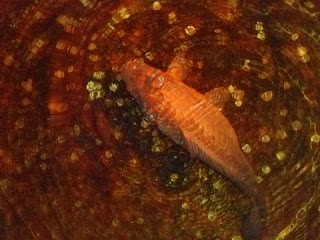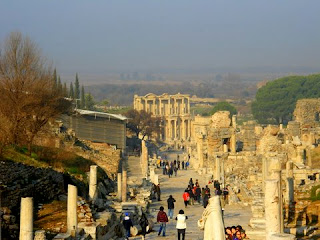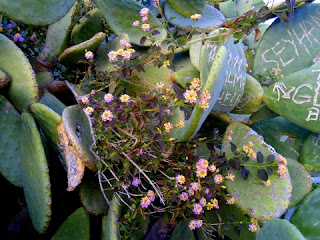Blue Mosque, from the roof of The Peninsula Hotel
Is it time? Yes, it's about time. High time I write about our fabulous trip to Turkey. Can't let too much time pass, can't let the memories languish and fade.
It would be irresponsible of me not to first thank Harry and Kathie Nicholson for visiting us in December and for their help in making this trip happen. They were enjoyable traveling companions, cheers to them and much love.
I had wanted to visit Turkey, specifically Istanbul, ever since I was bedazzled by photos of the city in a National Geographic back in the late eighties. The pics were accompanied by a story which spun the tale of a city so very ancient and incredibly modern all at once...seemed like a great place to pine for, a seductively dangerous place bursting with intrigue and adventure. Several viewings of "Midnight Express" did nothing to dampen my desire for the place.
Terry Jones' excellent Crusades documentary also stoked the fires of my desire to visit Istanbul. A Greek, Christian city at the time just before the Crusades, its Emperor, Alexius, concerned about the Seljuk Turks closing in on him, appealed to Pope Urban II for support in keeping the forces of Islam at bay. The disasterous and brutal actions that followed became known as the First Crusade.
Ever a religious studies geek, I've long desired to see the city whose emperor started the whole bloody mess, study the grave, mosaic, Byzantine face, immortalized upon the ancient walls of Aya Sofia, that I had seen on the documentary years ago.
Alexius, peering down at us from on high
Watch these two clips for a rundown th the spark that lit the fire of the Crusades, and for a taste of humorously genius historic tale-telling:
http://www.youtube.com/watch?v=mXed3tvR_-g
http://www.youtube.com/watch?v=tHO1P42p1HE&feature=related
Budapest, of course, has its own, special history with Turkey. The Ottoman Empire, ruling from Istanbul, occupied Hungary for about 150 years, and its influence upon the culture still resonates here. The public baths are the most apparent and beloved remnant of Ottoman rule, but there is a certain flourish to the general Hungarian aesthetic that seems vaguely mediterranean. There may also be a touch of Islamic "inshallah" (arabic, "god-willing") still lingering about Hungary as well, that idea that everything is up to God and we must resign ourselves to that fate. A couple of things seem evident as to outside influences upon Magyar culture.... the Habsburgs gave the Hungarians order and angst, the Turks gave them philosophy and art (as well as their indispensible staple, paprika), and there exists in the Hungarian psyche the tendency to indulge in all of those differing gifts.
Gül Baba, whose works I have been unable to find online, was a dervish poet and Ottoman patron saint of Budapest. He is buried in Buda on Rose Hill, where his spirit enjoys a sweet view of Parliament from a somber, stately mausoleum. The Turkish Republic now owns this site, the old Empire's small but prime patch of "Magyaristan".
Gül Baba's statue and mausoleum
Several towns in Hungary, from Pecs in the south to Eger in the north, still contain standing minarets and a mosque or two, most of which are now churches. These tantalizing crumbs of Ottoman leftovers served only to drive home my desire to visit Istanbul, which had, by the end of this past summer, become a sort of mild obsession for Boone and me. It seemed silly that we would not visit Istanbul, as close as we are at the moment, and we decided that the Christmas break would be the perfect time to do so.
The flight to Istanbul from Budapest was a cushy hour and a half. It was one of the most enjoyable flights I've ever been on. Turkish Air is, ahem, a "top flight" airline, complete with an inflight info movie starring the freshly scrubbed lads of Manchester U, clowning around with the airplane emergency gear. There is blessedly ample room between seats in which to squirm around and find a comfy position. They feed you and feed you well, with food you would not mind paying for, although it is all included in the price of the ticket, along with a decent selection of beverages.
The Nicholsons, Boone, Aidan and I landed shortly before dusk, with just enough light to see the white caps on the Sea of Marmara below and a cityscape punctuated with minaret after minaret. The driver who whisked us to our panzio was a seasoned chauffeur, taking countless, narrow, cobblestone shortcuts, through passages that seemed to dead end but only continued at an acute angle, under low hanging over passes that threatened to damage the roof of the taxi, squeaking through dense traffic with nerve-wracking but expertly performed speed, explaining in broken English (when he was not arguing with the dispatcher whose voice piped in from the staticky radio every now and again) why he was taking this particular route ( to avoid even worse traffic). We spilled out of the taxi after it arrived at our panzio, The Peninsula Hotel, which sits right next to a small neighborhood mosque. Happily preoccupied with figuring out where to find our next meal (dinner), we found a place (where I learned, the hard way, that when the server wrinkles his nose at the mention of the rosemary chicken, do not then order the rosemary chicken), ate and drank, then collapsed heavily onto our beds, resting up for the next day's ramble around the two massive mosques, just a short walk up the hill. I could not wait to hear my first call to prayer.
It came brutally early the next morning... a low, melodic, and surreal drone, calling the faithful...not sure anyone was quite up for that one. I certainly was not, and slept for an hour or two after the imam's amplified voice fell silent.
our neighboring mosque
The best district in which to hang your hat while you are in Istanbul, as we did, especially if you are visiting for just a few days, is Sultanahmet, close to the Golden Horn, along the coast of the Sea of Marmara. This neighborhood is the home of both the Aya Sofia and the Blue Mosque. as well as many other ancient attractions. What remains of the Hippodrome lies between the two mosques; the dank, darkly beautiful Basilica Cistern is in the neighborhood as well. Topkapi Palace is within walking distance from most of the hotels in the area, as is the Grand Bazaar. The Spice Market and the ferry terminal is a short tram ride from Sultanahmet. This district is in the very old part of the city...it looks and feels every bit its age despite the modern amenities. That first morning after breakfast, Boone and I climbed up to the roof of our panzio and surveyed our surroundings...Blue Mosque to west, Aya Sofia to the east, Marmara gently undulating to the south, and a whole lotta antiquity going on.
TRUE BLUE
in praise of the Blue Mosque
The Blue Mosque or Sultan Ahmet Mosque
With six minarets and eight, sensuous domes, the Blue Mosque, completed in 1616 under the rule of Ahmet I, looms with resolute splendor upon a hill in Sultanahmet. The grand motif of the structure compels the viewer to look up, look toward heaven and into the realm of God, as intended by the architect Sedefkar Mehmet Aga. Any viewer, religious or not, might be tempted to raise his or her arms high and wide in adoration while standing before it.
Of course, folks are selling things all around the mosque...one rug vendor attached himself to us, trying to be our tour guide, hoping that we would slip into his shop after touring the mosque. We politely declined, pleading practicality and poverty.
The five of us entered at the northern door (the main entrance is reserved for worshippers only), removed our shoes, then padded and pondered around the mosque for a while.
looking up into Allah's sky garden
prayer and meditation in the Blue Mosque
plush pile carpet in the Blue Mosque
It would be all too easy to slip into a blissful meditation inside the Blue Mosque. Incredibly ornate yet not extravagant, the building feels airy, open, free of distractions but generous in its veneration of the beauty of creation.
Several worshippers were present, gazing out into the grey winter sky toward Mecca, and some of the Muslim visitors knelt in prayer and performed ablutions, moved by the sanctity of the place.
AYA SOFYA
Whereas the Blue Mosque sets the stage for heavenly contemplation, its big sister, Aya Sofya, is all about the genius of mankind. It is oooolllld....dedicated to the Logos (Jesus) in 360 A.D. by the Emperor Justinian, the innovative design of its central dome alone is testament to the wonders that can spring from a partnership of scientific knowledge and spirituality. The structure is now a museum, standing frozen in time in its Islamic incarnation.
If the Blue Mosque is a bit quieter, more controlled in its design and decor, Aya Sofya seems a bit more enthusiastic and lux. From the glorious, angelically adorned middle of its central dome to the multicolored, marbled floors, worn down by the shuffling of feet through the millennium, Aya Sofya is a mosaic tapestry of jeweled colors and swaths of gold. It must have positively radiated before its gilt mosaics began to wear away. Detail is everywhere, mosaics of emperors and their wives, the adult Jesus Christ staring out at the world, with a gaze intense with holy wisdom.
central dome of the Aya Sofya
every corner is decorative in the Aya Sofya
Deesis Mosaic, Aya Sofya
ancient marble floor
mosque cat, warming himself in Aya Sofia
CATS OF ISTANBUL
A word about cats. It must be addressed. Kitties are all over the place in Istanbul, really, all over Turkey. It's where felines go after their nine lives are spent. These are not mangy, sickly little howlers skulking the neighborhoods at night, brutalized, in a feral state. The cats of Istanbul are fat and plush, healthy but unneutered so each season brings in a fuzzy crop of kittens. The peaceful face of the cat in the Aya Sofya is testament to the care the humans of Istanbul offer these creatures. Almost every shop places ouside its door a dish of cat kibble and a pan of water for the neighborhood felines. All of this reminded me of a story I read back in college about the prophet Mohammed, who loved cats, kept one of his own named Muezza, who would sometimes sleep in the Prophet's lap as he gave sermons. The Prophet advised the faithful to treat all creatures with kindness, and his words are well heeded in this officially secular but spiritually Muslim country. Here, the cats roam without fear in a city full of people who care for their well-being. There are a few dogs too, who enjoy similar care, and share the streets peacefully with the kitties, bound by some solemn code of creature decorum. Istanbul, for all its roaming critters, is remarkably free of poopy sidewalks and parks.
Sultana, pure white with one green and one blue eye, and her babies inside the rug shop
kitty garden
fuzzy pooch, sun-patching without a care in the square
cats and dogs are not the only creatures who enjoy the milk of human kindness in Istanbul
HERE WE ARE, GRAND BAZAAR
A traveler to Istanbul will have no trouble parting with his or her money...one young vendor at the Grand Bazaar grinned openly and honestly at us, beseeching, "How can I get your money from you?" We all laughed because, of course, this is the purpose of the bazaar, no reason to be coy about it.
We entered the old market through the Beyazit Gate, a fairly small portal which belies the size of this huge space. Finished in 1461, the bazaar's 22 entrances open up to 58 covered streets, 4000 shops, two mosques, and two hamams (turkish baths), and many, many restaurants. Photographs of this place could fill several coffee table volumes. I was overwhelmed by it...but I found, of course, what I was looking for, which was a hanging glass lamp. I could have come away with so much more.
just one of the thousands of shops, bursting with merchandise, in the Grand Bazaar
glass lamps in the Grand Bazaar
fresh squeezed pomegranate juice is cheap, delicious, and easy to come by in the Grand Bazaar
vendor, selling delicious sahlep (warm milk flavored with vanilla and honey), setting himself away from the Grand Bazaar
A person could spend a week in the Grand Bazaar alone. If I ever return to Istanbul, I will spend more time there, focusing on the all there is to see there, limiting my purchases to a pomegranate juice or some tea. We found that the shop owners weren't so keen to haggle, as we had been told...many prices are fixed so, unless you are in for a big ticket item, like a rug or some jewelry, don't expect to talk anyone down too much. Or maybe we were just not very good at it.
BOSPHORESCENCE
my favorite color, warm and cool all at once
Galata Tower, overlooking the Golden Horn
So blue so green, so aquamarine. That's the Bosphorus, the strait which divides Europe and Asia Minor, a slinky link between the Marmara and the Black Seas, whose name in ancient Greek means "ferry" or "ford".
There are several charming, fishing villages on the Bosphorus Coast. On Christmas Day, we took the ferry from the Golden Horn (short tram ride from Sultanahmet) and cruised the foamy strait to Andalukovagi, enjoying the sunny but very windy day, sipping hot tea from dainty glass cups, ( elegant and shapely, but impractically scorching to the touch), gazing and amazing at the ancient sites along the way. This day was one of my favorite days on the entire ten day visit.
The people of Andalukovagi, set apart as they are from the bustle and congestion of Istanbul, are laid back, small town friendly. The vendors here are not nearly as enthusiastic about , as those in the big city. We were able to walk from the harbor, through the town, and up to the fortress ruins with nary a disturbance. It was lovely...of course, we met several friendly cats along the way.
For obvious reasons, sea food restaurants were plentiful, so we chose a place close to the harbor, with an eye of the time and the ferry, and enjoyed the fresh seafood. I must say that food service, in every place we visited in Turkey, was with a smile (but not obsequious) and very quick.
As we ferried back to Istanbul, the afternoon began to turn to dusk, and the cloudy sky was stitched with the gold of the sinking sun. I have never seen any city skyline as beautiful as that of Istanbul, viewed in the early evening from the Bosphorus.
Istanbul on the Bosphorus
Boone, with Rumeli Fortress in the background
Andalukovagi
timid kitten in Andalukovagi
scenic Anatolia
Bosphorus flowing into the Black Sea beyond
Anatolian kitty, begging for fish sandwich
sweets for sale in Andalukovagi
end of a golden day
Christmas night back in Istanbul
THE SPICE MARKET, BASILICA CISTERN, AND TOPKAPI PALACE
lucious and fragrant spices
We had great luck with weather in Istanbul. All predictions warned of constant rain and clouds. Instead, we were blessed with party cloudy, rainless days illuminated by a cheerful sun.
The Spice Market in Istanbul is in the same neighborhood as the ferry terminal, a short tram ride away from our hotel. The covered building is part of the Yeni Mosque, and rents from the shops within were used at one time to cover the cost of mosque upkeep. Here, the vendors are every bit as extroverted with their salesmanship, but the crowds were not as daunting. We were lured into one sweets shop with the promise of tea, which was kept, and we purchased boxes of delicious pistachio Turkish delight.
the peppers and other dried treats sell themselves
dried rosebuds for tea
delightfully turkish
daily ablutions outside the spice market mosque, never mind the cold breeze
It took 7000 slaves to build the gorgeously utilitarian Basilica Cistern, which filtered water for the great buildings on The First Hill of Constantinople. This structure is a tribute to the beautiful marriage of function and form.
the illuminated, shallow waters of the Basilica Cistern
one of the dozens of handsome carp that call the Cistern home
one of two mysterious Medusa heads...their purpose unknown
Those fortunate Ottoman sultans of old...part of the job requirement was to reside in grand and gorgeous Topkapi Palace. At one point in time this royal residence was a small city, housing as many as 4000 people on its grounds. The spread is luxurious but not gaudy, organized but not rigid, with a grand view of the Bosphorus to the east. A person could spend a good chunk of the day here, strolling through tiled corridors and harem chambers over cold, glacier gray marble floors inside, through restful courtyards outside, paved with smooth rocks arranged in thoughtful, geometric designs. My focus was the fanciful tilework, painted in every rich shade of blue, a few green hues, or an occasional yellow or gold. Some rooms, particularly in the harem's chambers, were covered entirely in tile, some squares individually decorated, some part of a bigger design, a cypress tree, an intricate vine, or vaguely floral motif. I would love to have toured the gigantic palace bakeries, to have stood next to (what I assume to be) one of several massive ovens, but this area was off limits and I had to be satisfied with staring up at the exterior oven vents, their own huge size offering an idea as to the proportions of the ovens beneath the roof. Three hours, give yourself three hours, the guidebook advised. I think I'd like spend that time sprawled on the low-ridin' sofas in the Sultan's sitting room for a while, gazing out of the barred windows at the realm, if only someone had offered to bring me a spot of apple tea and maybe something from the palace ovens, covered in pistachios and dripping with honey. As if.
Topkapi oven vents
Topkapi Palace grounds
Topkapi apartments, inner palace
It's all about the tile at Topkapi
fireplace in the concubines' apartments
Topkapi Blues
sultan's sitting room
even the drains at Topkapi are lovely
ON TO ASIA MINOR
You know, when you travel to a place, it's a swell idea to carry a little book and a pen along. That's what they do in the movies, right? Some very organized, fastidious people do this, those who manage their time well. An experienced travel writer might also remember to pack pen and paper, but I'm not one of those people, alas. I wish so much that I was and that I had packed those things with me because the best way to recall such a visitation is to have something on hand at all times upon which to jot down the hundreds of impressions, smells, ordinary but somehow sublime observations. These days, an iPhone might serve the same purpose, but there's nothing like the physical act of writing and holding hard copy that makes the act of documentation so much richer.
If I had carried pen and paper, I could have written down descriptions of the smart and entertaining young servers at a favored restaurant, the hotel host who loved American indie films and discussion of them (we chatted about "Paris, Texas"), the dense crowds in this city of 14 million souls, multitudinous felines and the love they were shown by the people of the city, the exotic, dreamy bubble of Sultanahmet, the consistent offers of small vials of tea (on land or sea), the humble bliss of gazing into blue-green Bosphorus and gradually noticing a school of translucent jellyfish rising gracefully to the water's surface. These little moments really fine tune the experience of travelling, adding so much flavor and texture to the grander sights. I'm not sure how else to say it, if there is a less trite way to say it, but I am being sincere when I declare that I love Istanbul and would go back to spend much more time if ever I could.
the Star Hotel smoking room, where wasting time is practiced as an art form. my kinda place
the Rumist, personally, my favorite restaurant in Istanbul. one of the few dinners at which I did not order kebab
pigeons roosting in the old city wall
aya sofya at dusk
from rooftop of our hotel. much of Turkish life is spent on rooftops.
early morning departure...farewell Istanbul
ANATOLIA!
Five days spent in Istanbul flew by and soon we were in another taxi cab winding our way through the city streets and congested traffic, back to the airport, to catch a flight to Izmir, over in Asia Minor.
The flight was a quick one and soon we were on the ground, tightly packed into Osman's sport utility, speeding toward Selçuk, a small city in the Anatolian hills. Osman is the owner and host of the Nazar Hotel, and a fine host he was indeed. He was almost, but not too much, like a mother hen (gracious hospitality is his art), toasting bread for our breakfast over a flame, steadily and frequently offering vials of tea, preparing boiled potatoes for Aidan after he got a little stomach bug. A few of these ministrations featured a brief but expressive lecture about their many benefits. Osman was busy but never flustered, was as kind and sincere as he could possibly be. Really, a master of Turkish hospitality. When we arrived at the hotel, several members of his family were drinking tea in the breakfast area/lobby, including Osman's mother, who was lying still and silent upon the couch. She had recently suffered a stroke, but she acknowledged us kindly with a weak but sincere greeting. A cute little dog peered out of her doghouse on the backyard patio.
We all took an afternoon stroll around Selçuk and soon became charmed by it. The same Turkish friendliness was evident here, the salesmanship slightly less aggressive, the way of life much more basic than what we witnessed on our peninsular haven in Istanbul. A basilica ruin sits upon a small hillside overlooking Selçuk; a Byzantine aquaduct, which serves as a nesting spot for storks, creates an ancient cross section of the town. There are plenty of cars passing through, but a lot of people get around on bikes or even tractors. As dusk began to settle and the chilly night air rose, folks began burning firewood and coke and soon the sky was dusty pink, a smog settled into the town, and the stench of burning coke stung our noses which, for the curious, is reminiscient of burning plastic.
sweet Alice, at the Nazar
baking bread
aquaduct with stork's nest
local mosque
Selçuk, from St. John's basilica
basilica ruin pavers
chopping kindling
Selçuk enjoys a healthy little tourism industry...it serves as a handy home base, a launching pad of sorts, to the incredible ancient attractions that are so close by.
Our first full day in Anatolia was spent on an excellent three site tour. The guide was youngish and engaging, a local son, and his historic knowledge of Priene, Miletus, and Didyma, three Ionian cities in western Anatolia, was encyclopedic and fascinating. Priene, built in the mountains, was our first stop. This ruin was my favorite of the three.
PRIENE
I admit that I was not always rapt with attention during our guide's lectures, as I wandered over fallen columns and through primeval rooms, overgrown with aged, gorgeously gnarled olive trees. The climate here, the rocks, the vegetation...perfect. Mediterranean. Truly a land of plenty.
Although Priene now sits a tad inland, at its height it was a coastal city, overlooking the Aegean from a series of terraces. This site (there was an older site, located closer to the sea) was completed in the 4th century BCE and was one of he wealthier cities of its time, complete with indoor plumbing and sewer system.
Priene sleeps at the base of Mt. Mycale and for this reason among several, I fell hard for this ruin. I dreamt about it the evening of our tour...ever since I was very young, I have had reoccurring dreams about living in a steep city built into a mountainside and Priene seemed to have escaped from my dreams in that regard. The marble and limestone butte provides a dramatic backdrop for the stunning Temple of Athena. I got delightfully lost in the fallen beauty of the place, hiking through old stands of olive groves, up narrow, marble staircases that led to views both serene and breathtaking.
fallen olives at Priene...again, it's the small things that tug at my heartstrings
some embellishment or other, among many, at Priene
I can't begin to guess what this is but I'd love to have it in my own ruin garden. I should have been listening.
approaching the Temple of Athena
the arresting sight of Athena's temple with Mt. Mycale behind. the perfect place to worship the goddess!
one member of a small herd of free range cattle grazing in a tiny meadow at Priene
MILETUS
the theatre at Miletus
Once upon a time, Miletus was ancient Greece's wealthiest and most exceptional city. It was Isidore of Miletus' hometown; Isidore was the Aya Sofya's chief architect. Greek philosophical tradition is thought to have originated there. Miletus was where philosophers began toying with the idea that certain natural phenomena might also have natural causes as opposed to being a result of godly whim. Sixth century B.C. in these parts was bursting with ideas and creativity, and Miletus was at the center of it all. Once a coastal city, it shared a large bay with Priene. Since then, the sea has receded (or something) and what's left of Miletus now sprawls across a gently sloping, rocky plain. We began our tour at the great theatre and followed the Sacred Way past the agora, the baths of Faustina, and lonely Ionic ruins. Unfortunately, my camera battery was low and I had to be conservative with usage.
modern settlement from the top of the theatre
relief of a gladiator and bear, base of the theatre
Almost immediately after stepping off the bus at Miletus, a mother dog, teats a-swingin', politely approached our small group with the hope of receving a small morsel or two. None of us had anything to give her, unfortunately, but she seemed to be a pro at the art of dignified begging and she knew another load of humans would arrive soon enough. We found her litter of adorable pups hiding among the nooks and crannies at the base of the theatre.
animals are always photo worthy, despite low camera battery
horseman galloping along The Sacred Way, with Ionic stoa in the background
Apollo Delphinios (Apollo of the Dolphins)
DIDYMA
We finally reached the Aegean coast on our third and final stop on the tour. Didyma was an Ionian sanctuary, home to the magnificent oracle of Apollo. It was part of Miletus' considerable sprawl, and pilgrims to the sanctuary would follow the Sacred Way to reach it. The name of the sanctuary, Didyma, refers to the twins, Apollo and Artemis; the ruins of Artemis' temple, with only a couple of columns remaining, lie close to Ephesus, just outside Selcuk.
The lawn around this Apollo's temple is lush, green, and spongy...the source of a sacred spring bubbles to the surface here, a spring which nourishes the holy laurel trees that populate the grounds around the oracle.
The family which had long administered the sanctuary at Didyma was sent away by the Persians, after Darius seized the site in the fifth B.C. He then burned the temple to the ground, making off with the bronze statue of Apollo. A couple of hundred years later, Alexander the Great overthrew Darius III and began the restoration and resanctification of Didyma.
The site is certainly grand. The sheer size of the inner temple is awe inspiring. We were allowed to freely scale and scramble over the ruin, around and amongst random finials and discs, solemn in their fallen positions, fastened there by time.
sad Medusa, surrounded by sacred laurels at Didyma
fanciful bas relief, Didyma
open for exploration, temple of Apollo
fallen finial, resting in the marshy grass
subdued by centuries, once towering discs at rest
handsome marble bull's head at the sanctuary
THE EPHESIAN WAY
The outskirts of our little homebase of Selçuk brushes up against the outskirts of that ancient metropolis, Ephesus. From the Nazar, we all walked the half kilometer distance to the once magnificent Temple of Artemis (Apollo's twin), a lonely little ruin of a once grand sanctuary, whittled down to a single column that sits in the depression that used to be the foundation of the temple. Dozens of domestic geese filled the grassy depression and its borders were defended by an loyal canine who ran half the length of the border, barking his warning.
the Temple of Artemis
Through the ages, Ephesus had seen it all. The first inhabitants set up household in 6000 B.C. and through the ages, the city was a major player economically, politically, and socially. A time lapse film of Ephesus over the years might look like a stop motion animation of rubble piles rising and diminishing, with clusters of humans scurrying about, as earthquakes and warfare periodically laid waste. The action ended in the 15th century, after the Turks dominated the region, and by that time the city's glory days were long behind her. What's left is pretty damn glorious still.
fresh Ephesian figs
Curetes Street
the Odeon of Ephesus
Hadrian's Arch
peeking at the Library from around Town Hall
sign directing shoppers to the agora
sign directing patients to the physician
greek inscriptions
Curetes Street
Curetes Street is one of the three main Streets in Ephesus. Homes of the wealthy were built along the slope of one side of Curetes, while shops, fountains, and galleries lined the other side.
fountain of Trajan, Curetes Street
Ephesian feline, crossing the floor of a private residence on Curetes Street
Boone and Aidan at Hercules' Gate
archway at the Baths of Scholastica
During the Roman period, a great library was built in Ephesus, the Celsus Library. Ionic and Corinthian columns are stacked two levels high...however, two more levels once stood above the remaining ones, making the library one of the most imposing buildings in the city. The library is connected to the Great Theatre, where the apostle Paul gave sermons to the Corinthian Christians, by the Marble Road, which was part of the Sacred Way to the Temple of Artemis a few kilometers away.
Our tour of Ephesus ended at the theatre. The Arcadian Way, which leads from the theatre to where the harbor once was, is flanked by the remains of two gymnasiums and the lower agora. By this time, we were a little tired and also quite hungry so we left Ephesus via the northern entrance, satisfied with our time spent in the ancient city.
the Marble Way, up close and personal
Boone and I, in front of the Celsus Library
second level of the Celsus Library
a view of the lower agora, from inside the Celsus Library
signs from the Lower Agora
marble stairs of the Great Theatre
the Great Theatre of Ephesus
After spending quality morning time with the ancient ruins, we still had half a day left to explore....something. Somewhere.
Turkey is not generally known for its wine-making. There might be ample reason for that (one of them being that most of its citizens are Muslim), but the country produces wine nonetheless. In fact, Turkey is one of the oldest wine-making regions in the world. The climate is ideal, after all, for growing grapes of all varieties. The mountains above Selçuk grow some hardy vines and the village of Sirince is as charming, even more so, a hamlet as any in the Napa Valley.
Sirinçe is a few kilometers up the mountainside, so we hopped one of the regular shuttle buses and wound our way up the dusty road. Remarkably, I did not get car sick.
Sirinçe, whose name means "ugly town" is anything but. The old, Greek town still contains the remains of an old church, but the town is solidly Turkish nowadays. We spent about an hour or two exploring the village, munching on dried figs, making semi-educated wine purchases.
dormant vineyards around Sirinçe
the ubiquitous pomegranate, Sirinçe
dried delights
practically begging you, please, take a load off, enjoy some tea
cat family in Sirinçe
the Nazar are everywhere, watching you....
dried fruit and nut vendor...we ate most of a big bag of figs within the hour
alley snoop
repurposed shoes
purty (party?) wagon
Sirince, a little sleeping beauty, taking a winter's rest
We only spent a sliver of time in Sirinçe, but next to Andaluvagi, I thought that time was some of the best spent. Of course, when visiting a place like Turkey, tourists must visit the most famous antiquites. It would be ridiculous not to do so. However, it really does pay off to indulge a bit in spontaneity and whim. Sirinçe is a treasure, a place so precious, worth every jostle and bounce in the shuttle on the way up as well as the dangerously overcrowded conditions on the same shuttle coming back down the narrow mountain road. Tea and dinner were waiting to be served to us somewhere.
tea, at selçuk köftecisi
.
There's really no better way to finish off a successful journey abroad, jam-packed full of amazing sights, new knowledge, and precious experience, than to spend the last day in town, with no specific agenda. And that's what we did on our last day in Turkey. Our big outing was a visit to the Ephesus museum in town. It's relatively small, as museums go, but full of beautifully displayed artifacts inside and out.
eros riding a dolphin
floor of an Ephesian private residence, with popular dolphin motif
griffin, Ephesus museum
restful vignette, Ephesus museum
adorable statuette...she's one of the things I would have made off with if I had been an antiquities thief
love these ancient glassworks too, amazing colors
We spent the rest of the day just wanderin'. Which is what I would if I'm ever in Turkey again, having witnessed much of what must be seen the first time around. I loved Sultanahmet in Istanbul, and would definitely stay in that neighborhood again, but would spend more time outside that neighborhood, exploring the grittier parts of the city. We were told time and again how wonderful Cappadocia is....I think that region merits a trip of its own. It may be a cliché, but it sure rings true, that there is so much to do in this world and so little time. Best to savor the moments you are doled out and appreciate that you were able to experience them. That's how I will always feel about out trip to Istanbul, that it was a jewel of a time in my life.
A FEW, DELICIOUS PICTORAL CRUMBS
kindly imam
contemplative mosque courtyard
beautiful shards
bath ruin
road marker, taking a cig break
lemon tree, very pretty
favorite restaurant in Selçuk...tiny but excellent, they inundate you with mezzas until you are too full for the excellent kebab, which you can watch being prepared
incredibly cute and friendly Turkish girls..."my name is?"
the village from St. John's basilica
ruin of St. John's basilica, crusade pilgrimage site
mosque below the basilica
optunia growing among the basilica ruin
lantana with optunia, basilica ruin
St John's basilica...goodnight, Turkey
































